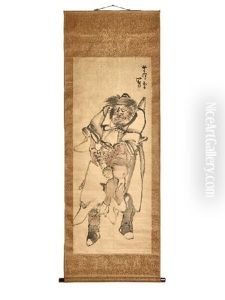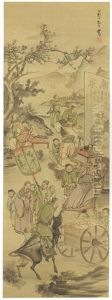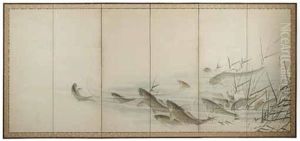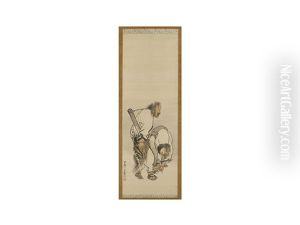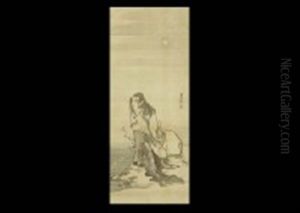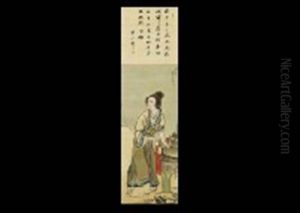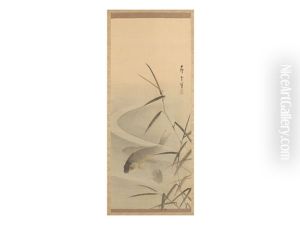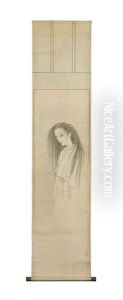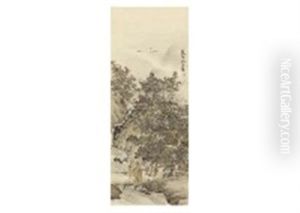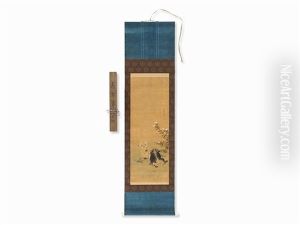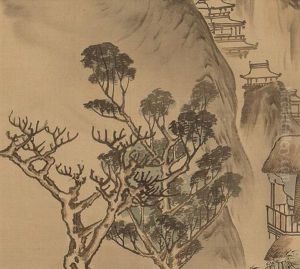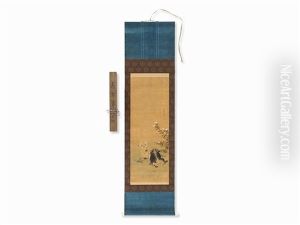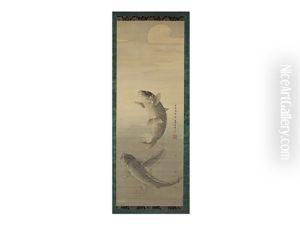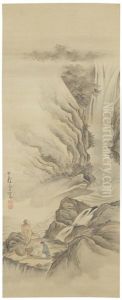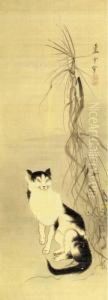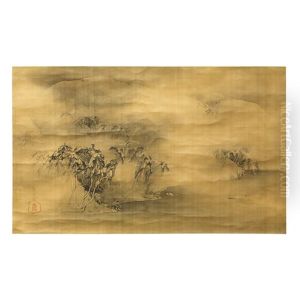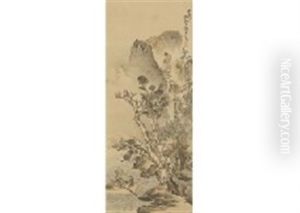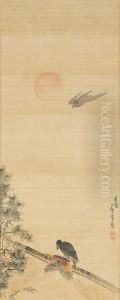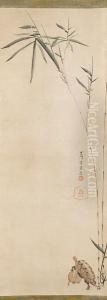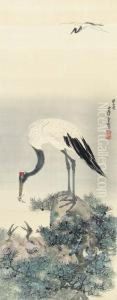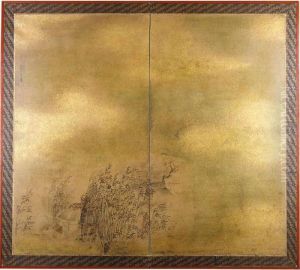Nagasawa Rosetsu Paintings
Nagasawa Rosetsu was a distinctive and innovative Japanese painter born in 1754 in the province of Higo, now part of Kumamoto Prefecture, Japan. He is known for his bold, expressive style and his contributions to the Maruyama-Shijō school of painting, which blended the refined techniques of the Maruyama school with the more personalized and expressive brushwork of the Shijō school. Rosetsu was a pupil of the renowned artist Maruyama Ōkyo, who was a pioneer in developing a more realistic approach to painting, breaking away from the more stylized forms of Japanese art that had prevailed for centuries.
Rosetsu's work is characterized by its dynamic and often whimsical qualities, showcasing a wide range of subjects including landscapes, animals, and supernatural themes. Despite his relatively short life, dying at the age of 45 in 1799, Rosetsu's artistic output was prolific. His ability to infuse traditional Japanese painting with a sense of immediacy and vibrancy made his work highly sought after during his lifetime and has cemented his legacy as one of the Edo period's most intriguing artists.
Rosetsu's journey as an artist began under the guidance of Maruyama Ōkyo, but he soon developed his own unique style. He moved to Kyoto, where he became well-known for his unconventional techniques, including the use of his fingers and unconventional tools to apply paint, and his ability to work on a large scale, creating some works directly on temple and shrine walls. One of his most famous works is a set of sliding door panels (fusuma) painted for the temple Muryojuji, known as the 'Ghosts of Saga,' which showcases his talent for blending realism with a sense of the fantastical.
Despite his success, details about Rosetsu's life remain relatively scarce, and much of what is known comes from the enduring popularity of his artworks. His legacy is preserved in collections worldwide, including in major institutions in Japan and the United States. Rosetsu's innovative spirit and distinctive style continue to influence modern art, making him a pivotal figure in the history of Japanese painting.

